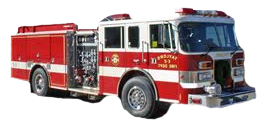Fire Safety – Winter Fires
The cold winter months are a leading time for home fires related to heating. Half of home heating fires are reported during the months of December, January, and February. Overall, heating equipment is the second leading cause of U.S. home fires and home fire deaths.
Printable Heating Safety Tips to Keep Your Home and Family Safe
Printable Winter Storm Fire Safety
Infographic: Put a Freeze on Winter Fires
Printable Heating Safety Checklist.
Home heating advice from NFPA – Put a Freeze on Winter Fires
Based on 2007-2011 annual averages:
- Space heaters, whether portable or stationary, accounted for one-third (33%) of home heating fires and four out of five (81%) of home heating fire deaths.
- The leading factor contributing to home heating fires (28%) was a failure to clean, principally creosote from solid-fueled heating equipment, primarily chimneys.
- Placing things that can burn too close to heating equipment or placing heating equipment too close to things that can burn, such as upholstered furniture, clothing, mattress, or bedding, was the leading factor contributing to ignition in fatal home heating fires and accounted for more than half (53%) of home heating fire deaths.
- Half (50%) of all home heating fires occurred in December, January, and February.
KEROSENE HEATERS
General Rules for Heating with a Portable Kerosene Heater
- Confirm that your heating equipment is allowed in your community
- Keep your heater at least 3 feet away from anything that can burn
- Always use the proper grade of the correct fuel and NEVER use gasoline in a heater designed for kerosene.
- Always refuel in a well-vented area, preferably outside, and when the heater has cooled.
- Install quality carbon monoxide alarms in your home.
PORTABLE FIREPLACES
There is nothing like sitting by an open fire on a cold night. Indoor and outdoor portable ethanol burning fireplaces have become more popular in recent years. While these products provide ambiance and a little warmth, keep in mind the fuel, device and open flame can be dangerous.
Ethanol fuel smarts
Store ethanol fuel in a closed container, away from the fireplace and out of the reach of children. It may not be easy to see the ethanol fuel flame. Always close the lid or use a snuffer to be sure the flame is extinguished before refueling into a cooled fireplace. Use only fuel made specifically for the fireplace.
Fireplace safety
- A portable ethanol burning fireplace, and the fuel, should only be used by adults.
- Clean up any fuel spillage and be sure all liquid has evaporated before lighting the fireplace.
- Light the fireplace using a utility lighter or long match.
- An adult should always be present when a portable fireplace is burning.
- Place the fireplace on a sturdy surface away from table edges.
- Never try to move a lit fireplace or one that is still hot.
- Don’t pour ethanol fuel in a device that is lit or not completely cool. It may result in a fire or injury.
- Allow the device to cool down for at least 15 minutes before refueling.
- Extinguish the flame when you leave the room, home or go to sleep.
NFPA Safety Tips – Portable Fireplace Safety




